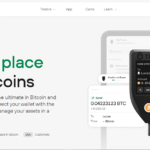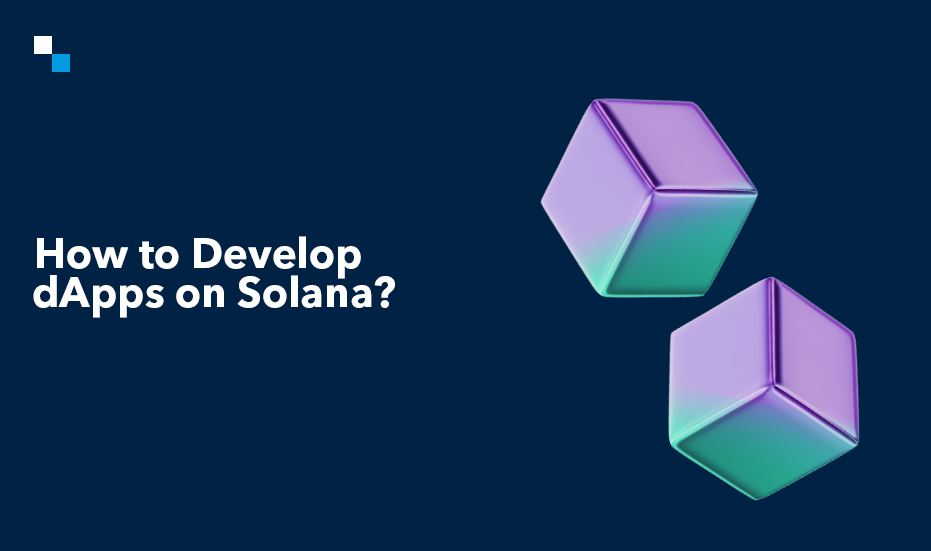Solana dApps are gaining traction across sectors like DeFi, NFTs, and gaming. With low fees, high speed, and an expanding ecosystem, Solana is now one of the go-to platforms for decentralized application development. For businesses exploring blockchain, investing in Solana blockchain development is no longer optional. Here’s a practical walkthrough of Solana dApp development, what makes it work, and how Solana blockchain development services help make the process smoother.
Why Choose Solana for dApp Development?
Solana brings some clear benefits to the table. Here’s what stands out:
- High throughput: Solana can process up to 65,000 transactions per second using its Proof of History mechanism. It handles real-time workloads, making it suitable for finance and gaming platforms.
- Low transaction costs: The average fee is close to $0.00025. For businesses dealing with frequent user transactions, this keeps operational costs down.
- Developer tools: Solana supports Rust, C, and C++. It offers tools like Solana CLI for deployments, the Anchor Framework for smart contracts, and Web3.js for frontend integration.
- Security and decentralization: The combination of Proof of Stake and Proof of History ensures data consistency without compromising on decentralization.
Steps Involved in Solana dApp Development
Building dApps on Solana involves clear technical steps. Here’s what the process looks like.
- Learn Solana’s Architecture
Understand how the Solana blockchain works:
- Proof of History ensures high-speed transaction validation.
- Solana Runtime executes smart contracts.
- Program Library includes ready-to-use modules for functions like staking and token creation.
A basic understanding of these components helps plan application logic better.
- Define the Use Case
Decide what the dApp is meant to do. Some common examples:
- Lending and borrowing platforms
- NFT marketplaces
- Play-to-earn games
- Data tracking tools for supply chains
Clarity at this stage helps streamline development and reduces rework.
- Set Up the Dev Environment
Getting started with development requires a few tools:
- Rust: Smart contracts are written in Rust.
- Solana CLI: Used for compiling, deploying, and managing programs.
- Wallet: Phantom or Sollet wallets help interact with deployed programs.
- Anchor: Simplifies writing secure and efficient smart contracts.
This setup allows seamless interaction with the Solana blockchain during development.
- Write the Smart Contract
Solana smart contracts are referred to as “programs.” When coding:
- Write logic in Rust
- Use pre-built modules where needed
- Keep code lightweight to manage execution costs
- Run unit tests before integration
A well-written smart contract sets the foundation for secure operations.
- Build the Front End
User interaction needs a strong UI. Use React or Vue.js to create responsive interfaces. Then integrate the frontend with the blockchain using the Solana Web3.js library.
Web3.js supports:
- Wallet connections
- Smart contract interactions
- Transaction signing
Focus on keeping the interface simple to drive usage.
- Test the dApp
Use Solana’s devnet or testnet for pre-launch testing. Validate:
- Core features
- Speed and costs
- Security holes
Testing helps prevent breakdowns and improves reliability post-deployment.
- Deploy to Mainnet
Once satisfied with performance, deploy the contract using the Solana CLI. Ensure wallets are funded and configurations are correct. Monitor execution to stay within cost limits.
- Ongoing Monitoring and Updates
After launch, constant monitoring is necessary:
- Use analytics for user behavior
- Update contracts when needed
- Roll out improvements based on feedback
This helps keep Solana dApps aligned with user expectations and industry changes.
Why Work with a Solana Blockchain Development Company?
Solana blockchain development can be technical. Hiring a Solana blockchain development company simplifies the process. Here’s how:
- Access to pre-vetted Solana developers
- Custom development aligned with business goals
- Faster time-to-market with structured workflows
- Full-stack Solana blockchain development services under one roof
From consulting to code delivery, expert teams reduce risk and speed up delivery.
Final Thoughts
Solana blockchain development is ideal for projects needing scale, speed, and low costs. Whether it’s a DeFi app, NFT marketplace, or Web3 game, Solana dApps offer a viable path to adoption. Partnering with a Solana blockchain development company ensures the process stays on track and delivers results.
- Getting Started with Solana dApp Development: A Beginner’s Guide for 2025
- Explore the basics of building decentralized apps on Solana. Discover essential steps, tools, and tips to kickstart your Solana dApp development journey in 2025.
- Solana dApp Development
Related posts:
 Rexas Finance Launch Nears as Whales Turn to a $20M Token Opportunity
Rexas Finance Launch Nears as Whales Turn to a $20M Token Opportunity
 EVM Compatible Blockchain 2025: The Backbone of Web3 Scalability & Innovation
EVM Compatible Blockchain 2025: The Backbone of Web3 Scalability & Innovation
 Get Started with RăbbitX: A Next-Gen StarkNet* DEX | RabbitX.Com
Get Started with RăbbitX: A Next-Gen StarkNet* DEX | RabbitX.Com
 Planning Real Estate Moves in 2025: The SmartKey Realty Perspective
Planning Real Estate Moves in 2025: The SmartKey Realty Perspective
 Daily Crypto Updates: Coinpedia.org’s Reliable Source for Blockchain News
Daily Crypto Updates: Coinpedia.org’s Reliable Source for Blockchain News
 Why 2025 is the Year Every Crypto Holder Must Level Up Their Security Game?
Why 2025 is the Year Every Crypto Holder Must Level Up Their Security Game?
 Trezor Suite: The Complete Guide to Secure Crypto Management
Trezor Suite: The Complete Guide to Secure Crypto Management
 Die besten Trading-Tipps von Thomas Wimmer für Einsteiger & Profis
Die besten Trading-Tipps von Thomas Wimmer für Einsteiger & Profis







